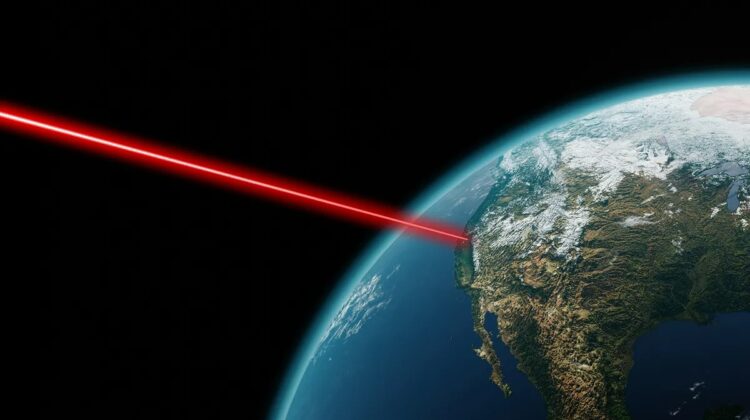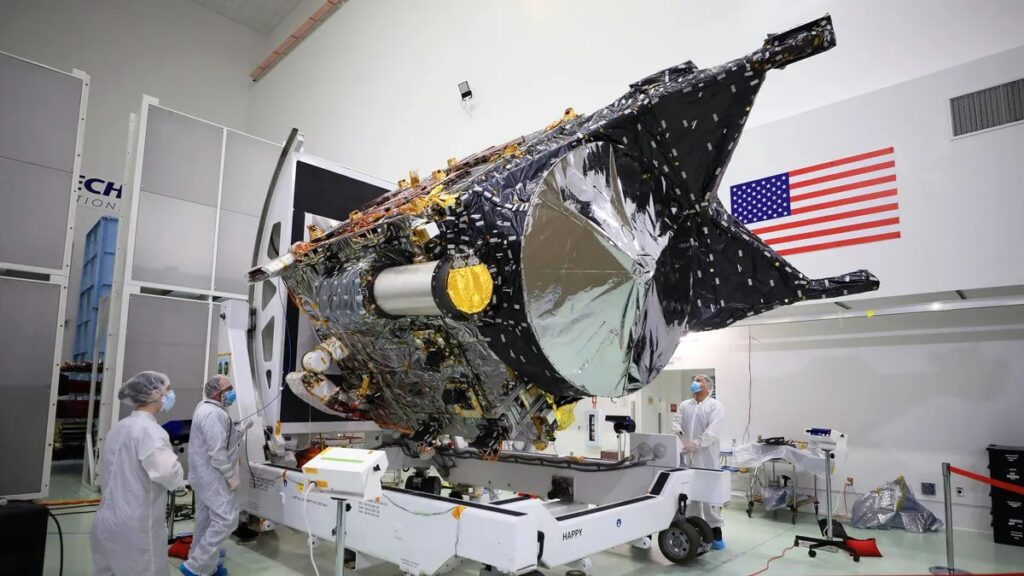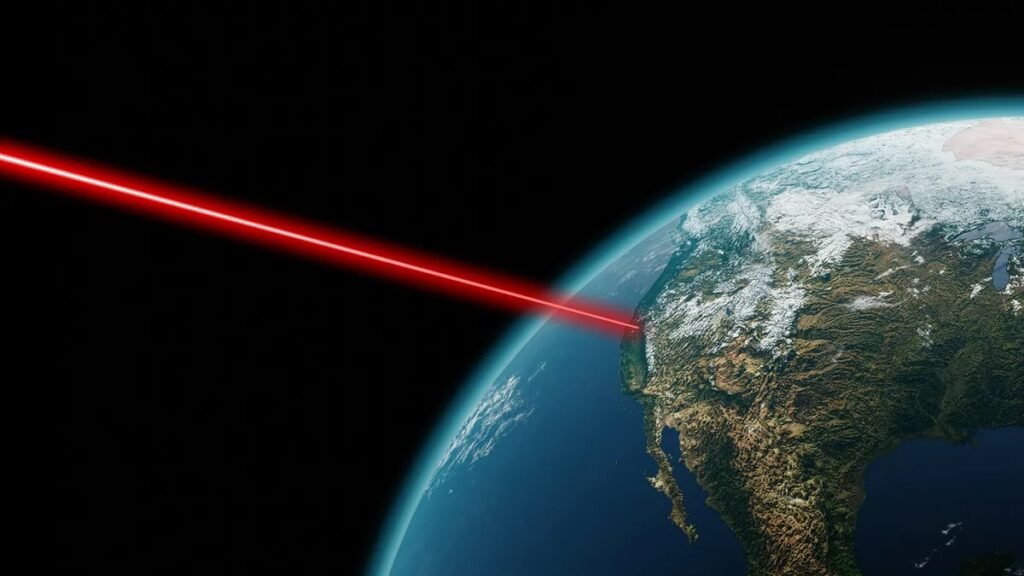
In a groundbreaking achievement that could revolutionize the future of spacecraft communication, a deep space experiment aboard NASA’s Psyche spacecraft has successfully beamed a message to Earth via laser from a staggering distance of 16 million kilometers, marking the farthest-ever demonstration of optical communication of this kind. This accomplishment, conducted by the Deep Space Optical Communications (DSOC) system, showcases the potential for transformative advancements in how spacecraft communicate across vast interstellar distances.
The DSOC, part of a two-year tech demonstration riding alongside the Psyche spacecraft on its mission to the asteroid Psyche, utilized a near-infrared laser to encode test data and transmit it from its position far beyond the Moon. The laser beam traveled approximately 40 times farther than the Earth-Moon distance, reaching the Hale Telescope at Caltech’s Palomar Observatory in California.
The critical milestone of achieving “first light” on November 14, as reported by NASA’s Jet Propulsion Laboratory (JPL), involved a meticulous maneuver where the DSOC’s laser transceiver locked onto JPL’s powerful uplink laser beacon at the Table Mountain Observatory. This alignment allowed the DSOC’s transceiver to direct its downlink laser precisely at Caltech’s observatory, located 130 kilometers away.

Trudy Kortes, director of Technology Demonstrations at NASA HQ, emphasized the significance of this achievement, stating, “Achieving first light is one of many critical DSOC milestones in the coming months, paving the way toward higher-data-rate communications capable of sending scientific information, high-definition imagery, and streaming video in support of humanity’s next giant leap: sending humans to Mars.”
While optical communications have been employed for messaging from Earth orbit before, this marks an unprecedented distance for laser-based communication. Laser communication, utilizing photons moving in the same direction at the same wavelength, enables the transmission of vast amounts of data at unprecedented speeds by encoding information into the oscillations of light waves, transmitting messages via infrared beams invisible to humans.
NASA typically relies on radio waves to communicate with missions beyond the Moon. Laser beams offer a distinct advantage by enabling the packing of significantly more data into tighter waves. The DSOC tech demo aims to demonstrate transmission rates 10-100 times greater than current top radio communication systems.
The enhanced data transmission capacity holds promise for future space missions, allowing for higher-resolution scientific instruments and faster communications during deep space endeavors. Dr. Jason Mitchell, director of the Advanced Communications and Navigation Technologies Division within NASA’s Space Communications and Navigation program, stated, “Optical communication is a boon for scientists and researchers who always want more from their space missions and will enable human exploration of deep space. More data means more discoveries.”

However, challenges remain to be addressed. As optical communication covers greater distances, precision in pointing the laser beam becomes more critical. Additionally, the signal’s photons may weaken over longer distances, resulting in increased communication lag times. During the November 14 test, it took approximately 50 seconds for photons to travel from Psyche to Earth. As Psyche reaches its farthest distance, this travel time is expected to increase to around 20 minutes, necessitating adjustments for both Earth and the spacecraft to account for their changing positions.
Despite these challenges, the record-breaking technology demonstration has proven highly successful. Meera Srinivasan, operations lead for DSOC at JPL, noted, “[The] test was the first to fully incorporate the ground assets and flight transceiver, requiring the DSOC and Psyche operations teams to work in tandem. It was a formidable challenge, and we have a lot more work to do, but for a short time, we were able to transmit, receive, and decode some data.”
In the words of Abi Biswas, project technologist for DSOC at JPL, the team was able to exchange “bits of light” to and from deep space. This exchange of bits of light could potentially redefine how we communicate in space exploration, opening up new possibilities for the future of interstellar communication.

Leave a Reply